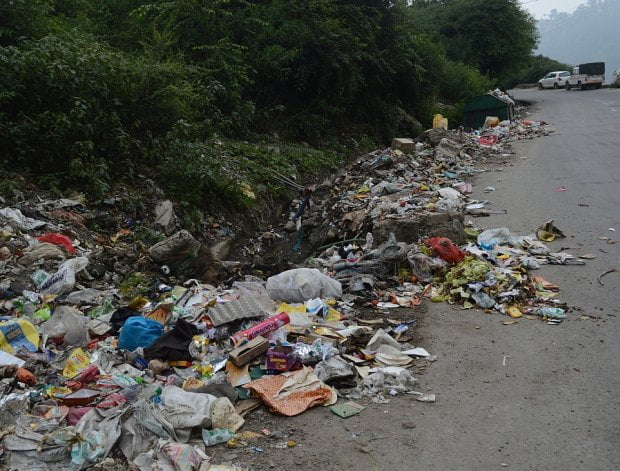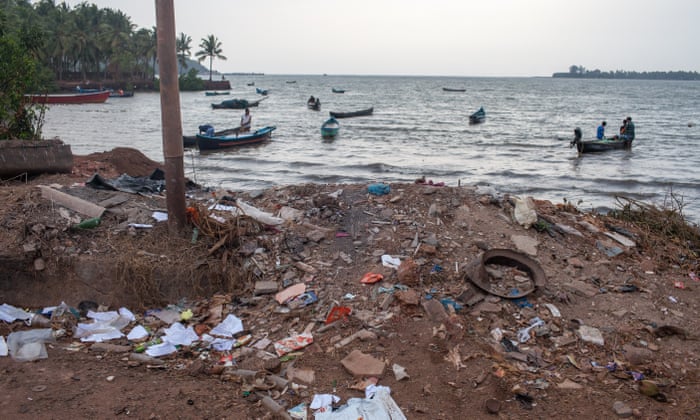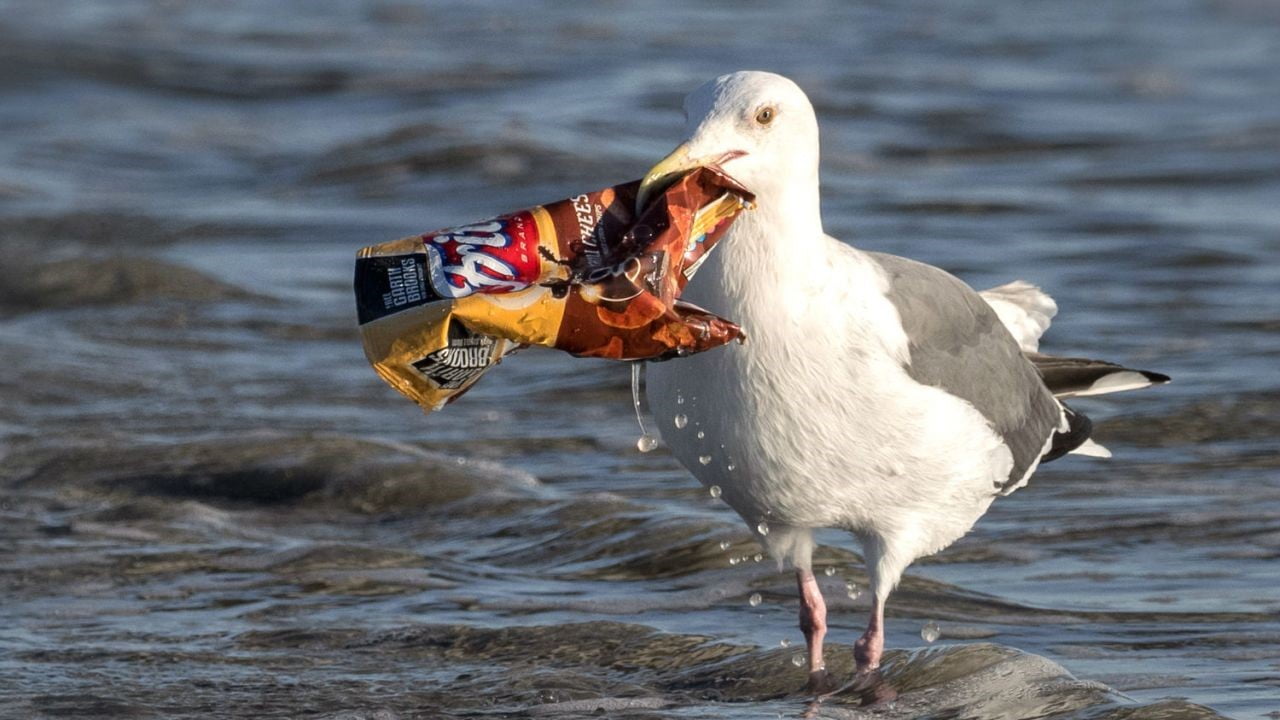Editor’s Note: This month, that is June 2020, FII’s #MoodOfTheMonth is Feminism And Environment, where we invite various articles about the diverse range of experiences which we often confront while interacting with our natural as well as social surroundings. If you’d like to share your article, email us at pragya@feminisminindia.com.
Old movies are gateways to another world which doesn’t exist today. When I watch movies like Kabhie Kabhie (1976) and Jab Jab Phool Khile (1965), I get transported to an era that was serene and joyous. Shashi kapoor and Amitabh Bachchan made me swoon over the white mountains of Kashmir. The icy lake and boat houses were beautiful and surreal to my born-and-brought-up-in-the-capital brain.
Have you noticed what most people from North India say when they visit hill stations and beaches? They say “Ekdum laga hi nahi ki India mai hain,”—the crux of the definition and identity of India is a busy, hot street, always in the middle of a celebration. North Indian culture is magnified and takes over the narratives of other regions in the country, mostly.
Economically well-to-do Indians are also big on vacations. City dwellers take trips to the extreme points of the country to “beat the heat” and end up in a hill station—sipping hot chocolate and throwing the tiny, red Nescafe plastic cups on the edge of the road, discreetly. We also have a culture which promotes ageism—so when kids correct their parents about such habits, they’re shunned. We inculcate such ideals into the minds of the younger generation by repeatedly practicing such acts and enabling it later in life. Beaches have more water bottles than sea shells, mountains have turned yellow, lakes are drying up and people who actually live in these tourist spots feel taxed about the situation. Tourists go to such places for de-stressing themselves and end up being a headache for the people residing there.

Nainital
I have been a witness to the atrocities bestowed on Naini Lake in Nainital over a period of fifteen years. The lake has reduced itself, and water retention in the lake is at an all time low. Lakes get snuffed when they are treated as a hole to throw all your unprocessed waste into them. The lake is currently filled with contaminants, solid waste, chemicals, water bottles and chips wrappers. Reader, I’m not exaggerating—the next time you visit Nainital, just dip your hand into the lake and you’ll be able to find your favorite lays wrapper in seconds! The math regarding tourism is quite simple—when we use resources while we’re vacationing then we’re actually using things that are someone else’s and hence, we should not exploit it by taking two hot showers a day.
Numerous people plan on making Nainital their retirement home. Buying property in mountainous regions and fetishising that lifestyle is alarmingly common in people nowadays. When the property demand in such regions increases, then this consumerist tourist economy ends up laying down forests and destroying wildlife. Bhimtal has a Country Inn which covers five hectares of land and houses an indoor pool. Imagine the amount of infrastructural changes that must’ve gone into its making. And not to forget the pressure on land it’s creating. There is a society in Bhimtal which has been created as aesthetically pleasing to manufacture the comfortable idea of retirement and peace. These architectural ventures are planned out by removing an area of forest and wildlife which is essential for the biodiversity of that place. Second homes hamper the actual homes of locals in a certain place by dividing resources and increasing competition.
Reader, I’m not exaggerating—the next time you visit Nainital just dip your hand into the lake and you’ll be able to find your favorite lays wrapper in seconds! The math regarding tourism is quite simple—when we use resources while we’re vacationing then we’re actually using things that are someone else’s and hence, we should not exploit it by taking two hot showers a day.
Shimla

In the summer of 2018, Shimla, a city in Himachal Pradesh, faced acute shortage of water. The city has a population of approximately two lakhs which increases dramatically during the tourist season. The well-known hill station receives about sixty-six thousand tourists every year. This increases water and resource demand exponentially and leaves the locals in sweat. An article by The World Bank covered the situation. It was a mixture of poor water management and unauthorized siphoning of resources. The city faced ample water-borne diseases because of the lack of good infrastructure which covers the entire city’s sewerage system.
Also read: Environment, Conflict And Sustainability: The Fisherwomen Of Kashmir
Gujarat
While we try to mend problems for cities without refusing to promote tourism in certain areas we forget that the space we’re taking up for leisure, belongs to someone. Hijacking villages and displacing indigenous/tribal people to create spaces for tourism isn’t something we should be comfortable doing. But the government did get away with a monumental act like this just last year. In October, 2018 the ‘Statue of Unity’ was revealed in the Narmada district of Gujarat. The statue was supposed to bring in business into the area by enhancing tourism. The government was ostensibly responsible for compensation which had to reach Kevadia people and people who reside near the Sardar Sarovar Dam. However, alternative employment wasn’t provided to the people who were displaced. Such government apathy and greed feeds on tribals and indigenous people.
An excerpt from an article by Business Line elucidates, ‘Punabhai Tadvi, a village leader, complained of government apathy towards their livelihood and said the State is not creating an opportunity to earn a living. “They (the government) liked our land, so they came to us asking for it. But they don’t like us, because we are detained every time the Prime Minister visits the place. We are asking only for our rights for a better living. Should we not be a part of the development that he is portraying?” Tadvi said addressing the media here on Tuesday.’
While we try to mend problems for cities without refusing to promote tourism in certain areas we forget that the space we’re taking up for leisure belongs to someone. Hijacking villages and displacing indigenous/tribal people to create spaces for tourism isn’t something we should be comfortable doing. But the government did get away with a monumental act like this just last year.
Goa

For Goan Catholic community, the dreamy fetishising of Goa is taxing. Movies like Dil Chahta Hai promotes the location as the ultimate holiday destination for college students because it transforms friendships. But, there are problems in this perfect spot. The seaside hotels affect the aquatic and marine life—turtle nesting sites and a growing demand for exotic seafood. The hotels also monopolise the sea area leaving no space for tribal fishing communities to earn their livelihood. The spike in the demand for second homes in Goa have increased the prices so drastically that locals can’t buy homes anymore. Women from Calangute and Baga face sexual harassment from tourists because they are considered “available”.
Kashmir
Kashmir is most Indians’ favorite location. But, how many Indians are willing to address the state-sponsored violence which the government has lashed on the Kashmiri Muslim community? Last year, property in Kashmir was made available to mainland Indians. Its presence on the Indian map is a question of ego but its care really isn’t the current government’s concern it seems. Tourism was a big part of Kashmir’s economy. However, Kashmir is scampering for even basic internet services since August 2019.
Also read: Why Do We Need To Stop The Culture Of Tribal Tourism In India?
Tourism takes a toll on the inhabitants of the place a tourist is visiting. Practicing caution and being aware of your imprint on that region is very important. The tourism industry contributes rigorously to India’s economy because of the cultural diversity. However, how respectful are we as internal tourists in our own country? How aware are we about the impact we’re creating on the environment? My guess is, zilch. Read ahead of your vacations and understand the place you’re about to visit, try to stay in locally owned motels and be conscious of what you’re leaving behind.
Featured Image Source: Africa Sustainability Matters
About the author(s)
Aamna is an impulsive writer who is studying and falling in love with English literature. She is learning, unlearning and relearning herself and the world around her every single day. She loves painting and believes that she is the daughter of post modernism.




